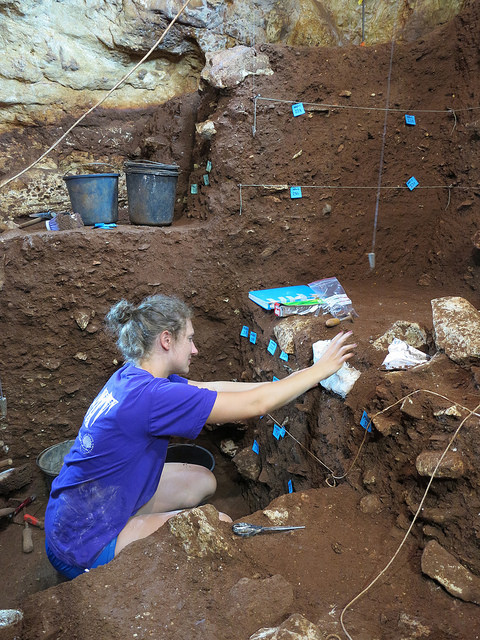
Sophisticated radiocarbon dating at Israel’s Manot Cave is helping to better define when two ancient human groups were present in the Levant, a key region in the dispersal corridor to Europe. The results will help further understanding of the dispersal timeline of modern humans into Eurasia more broadly. While many different groups dispersed into Europe throughout history, the group that successfully colonized it was associated with unique behavioral and technological innovations, broadly referred to as the Upper Paleolithic. Central to understanding the spread of modern humans with Upper Paleolithic traditions is defining the timing of archaeological industries, particularly the Early Ahmarian and the Levantine Aurignacian, in the Levant. However, a timeline of Early Ahmarian and Levantine Aurignacian presence in the Levant has not been conclusively identified because many studies to date have been based upon contaminated samples; further, there have been limitations in radiocarbon dating. To obtain an improved chronology of archaeological industries in the Levant, Bridget Alex and colleagues designed their own “research program for radiocarbon dating” in which they developed pretreatment procedures to remove contaminants from 41 charcoal and 6 sediment samples and used geochemical and geoarchaeological methods to more carefully define the stratigraphic contexts from which the samples were recovered. Their analysis of radiocarbon dates and artifacts suggests the Early Ahmarian culture was present from 46,000-42,000 calibrated years before present (cal BP) and the Levante Aurignacian existed from 38,000-32,000 cal BP. The authors believe their results provide a foundation for future Levantine chronology studies, thus improving our understanding of the spread of modern humans and traditions.
_______________________________________
Above and below: Archaeologists excavate in Manot Cave. Above credit: Bridget Alex, Below credit: Credit: Omry Barzilai
The Manot Cave is a cave in Western Galilee, Israel, discovered in 2008. It is notable for the discovery of a skull that belongs to a modern human, which was previously estimated to be 54,700 years old. The partial skull was discovered at the beginning of the cave’s exploration in 2008. Its significance was realised after detailed scientific analysis, and was first published in an online edition of Nature on 28 January 2015. This age implied that the specimen is the oldest known human outside Africa, and is evidence that modern humans lived side-by-side with Neanderthals. The cave is also noted for its “impressive archaeological record of flint and bone artefacts”. (Wikipedia)
_________________________________________________
______________________________________________________
Lead study author Dr. Bridget Alex collects sediment and charcoal samples for radiocarbon dating. Specifically here she prepares to remove a block of sediment for micromorphological analysis by wrapping it in plaster. Near base of cave (area C). Credit: Bridget Alex
________________________________________________________
Early Upper Paleolithic stone tools excavated from Manot Cave. Credit: Omry Barzilai
___________________________________________
Assortment of stone tools excavated from Manot Cave. Credit: Bridget Alex
_______________________________________
Article Source: American Association for the Advancement of Science news release.
____________________________________________________
Receive 30 days free access to the popular new CuriosityStream lineup of documentaries on science, history, nature, and technology as a new Popular Archaeology premium subscriber.
___________________________________________
Travel and learn with Far Horizons.
____________________________________________











